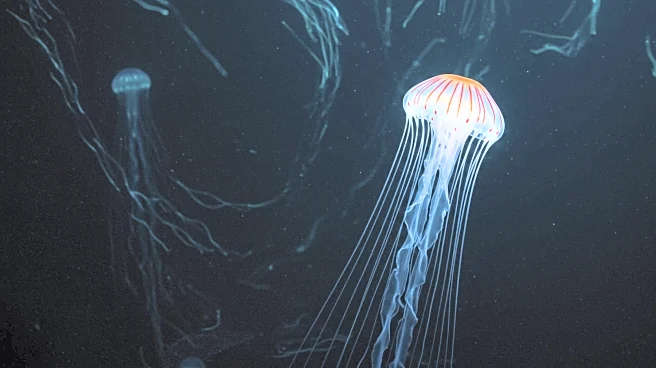What's Happening?
A study published in Nature has mapped the global distribution and evolutionary relationships of brittle stars, revealing their significant genetic connectivity across vast oceanic distances. Researchers analyzed DNA from thousands of specimens collected on hundreds of research voyages and preserved in natural history museums worldwide. The study found that these deep-sea invertebrates have quietly migrated across entire oceans over millions of years, linking ecosystems from Iceland to Tasmania. This comprehensive study used DNA from 2,699 brittle star specimens housed in 48 natural history museums globally, showing that deep-sea environments allow species to disperse over vast distances.
Why It's Important?
The findings highlight the deep sea as a connected superhighway for marine life, challenging previous notions of isolation. This connectivity has implications for understanding marine biodiversity and evolution, as well as conservation efforts. The study underscores the importance of museum collections in providing valuable data for scientific research. As threats from deep-sea mining and climate change increase, understanding the distribution and movement of marine life is crucial for developing strategies to protect these fragile ecosystems.
What's Next?
The study calls for further research to understand the global patterns of deep-sea life and the factors influencing biodiversity. Conservation efforts may need to focus on protecting these interconnected ecosystems from environmental threats. The research also opens avenues for exploring the genetic basis of marine life adaptations and resilience, potentially informing future studies on marine biodiversity and conservation.
Beyond the Headlines
The study highlights the enduring scientific value of museum collections, demonstrating how preserved specimens can unlock new knowledge about the planet's past and help shape its future. The connectivity of deep-sea ecosystems may also influence global marine policies and conservation strategies, emphasizing the need for international collaboration in protecting marine biodiversity.













